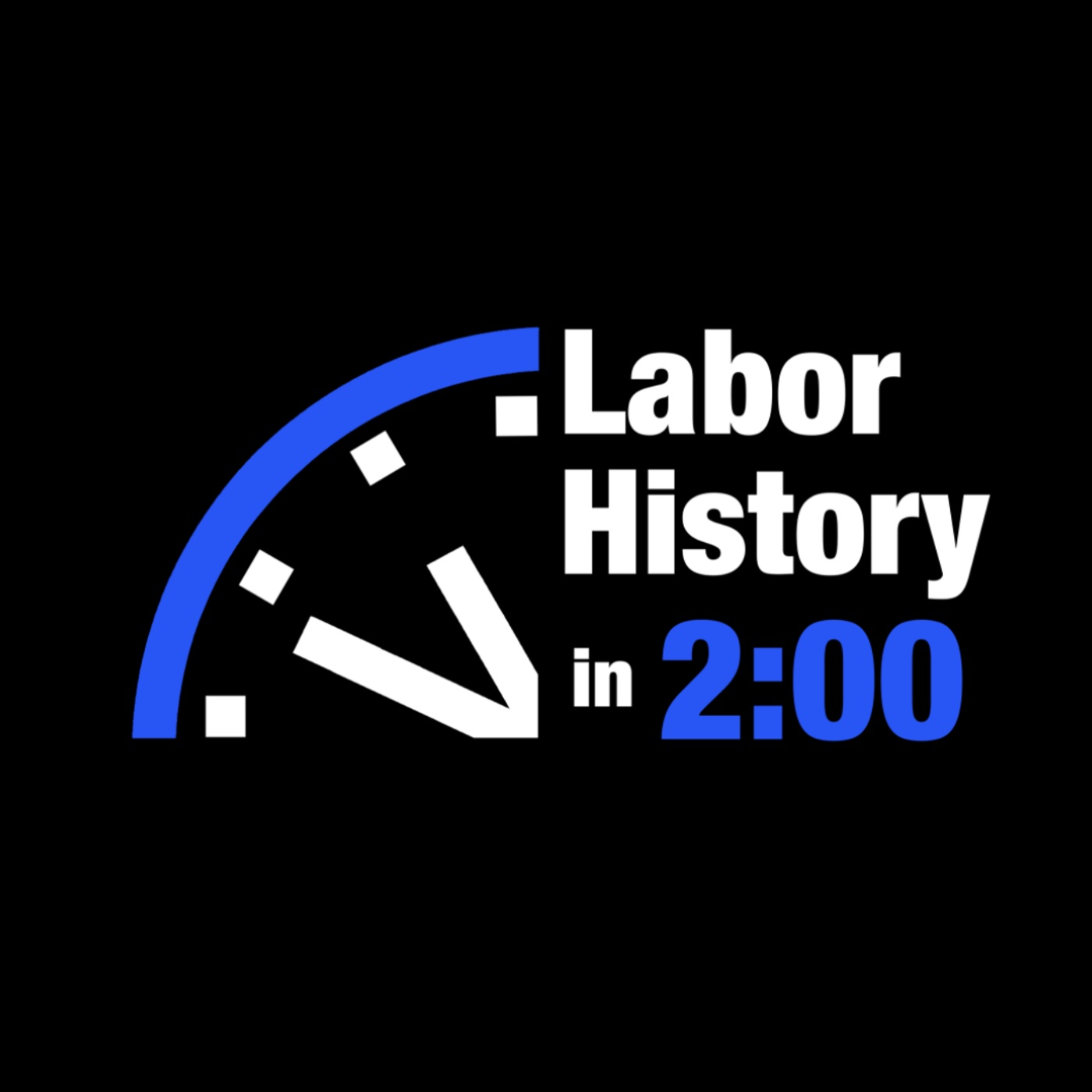Episodes
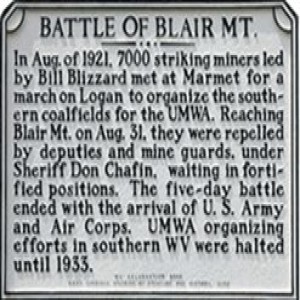
Monday Aug 31, 2020
August 31 - The Battle of Blair Mountain
Monday Aug 31, 2020
Monday Aug 31, 2020
On this day in Labor History the year was 1921.
On that day the “Battle of Blair Mountain” raged in Logan County, West Virginia.
Members of the United Mine Workers of American were attempting to organize the minefields in the southern part of the state.
The effort to bring workers the union was met with violent resistance.
The miners armed themselves and marched south.
As many as ten thousand joined the march.
They met armed company men at Blair Mountain.
In the battle that ensued, one million rounds were fired.
The mine owners even hired private planes to drop bombs on the union miners.
The US army intervened, and the battle ended.
Despite not being successful in their march, the bloody battle brought national attention to the violence in the coal fields.
But that was not the last Battle for Blair Mountain.
In 2011, there was a proposal to bring mountain top removal mining to Blair Mountain.
This type of mining blasts off large chunks of a mountains surface, to get at the coal seams below.
Protestors stood against the proposal.
They argued it would be environmentally devastating to the area.
They also argued it would blast away one the most important sites of labor history in the nation.
Some coal miners took exception to the protests.
In a CNN documentary on the conflict, one union miner said, “Mountaintop removal is what built this house, sends that little girl to school, provides insurance for my wife…”
But another miner joined in the protest against removal.
He told CNN that miners had been “brainwashed to think, “Oh I can’t have a job unless it’s a mountaintop removal job.”
In 2014, the state prohibited surface mining at Blair Mountain……. for now,
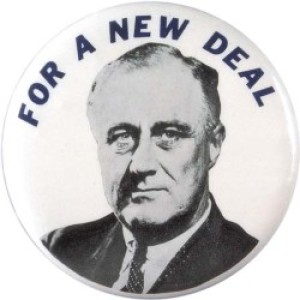
Sunday Aug 30, 2020
August 30 - Taxing the Rich
Sunday Aug 30, 2020
Sunday Aug 30, 2020
On this day in Labor History the years was 1935.
That was the day that President Franklin Delano Roosevelt signed the Revenue Tax Act, more popularly known as the “Wealth Tax.”
The act reformed the federal income tax to raise rates on the wealthiest in the nation.
Those making over $5 million could pay taxes up to seventy-five percent.
In a speech to Congress that summer, Roosevelt had explained his thoughts on wealth and taxes.
The President said,
“Wealth in the modern world does not come merely from individual effort;
it results from a combination of individual effort and of the manifold uses to which the community puts that effort.
The individual does not create the product of his industry with his own hands;
he utilizes the many processes and forces of mass production to meet the demands of a national and international market.
Therefore, in spite of the great importance in our national life of the efforts and ingenuity of unusual individuals,
the people in the mass have inevitably helped to make large fortunes possible.
Without mass cooperation great accumulations of wealth would 'be 'impossible save by unhealthy speculation.
As Andrew Carnegie put it, "Where wealth accrues honorably, the people are · always silent partners."
Whether it be wealth achieved through the cooperation of the entire community or riches gained by speculation—in either case the ownership of such wealth or riches represents a great public interest and a great ability to pay.”
Although President Roosevelt tried to win over the nation's wealthy by quoting industrialist Andrew Carnegie, he did not gain their support.
Not surprisingly many of the national’s wealthy lobbied for and used tax loopholes to evade paying the new rates.
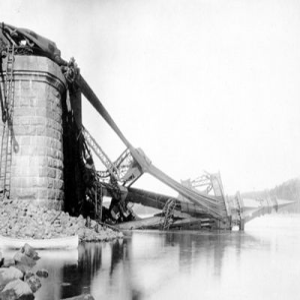
Saturday Aug 29, 2020
August 29 - Flawed Designs Kill
Saturday Aug 29, 2020
Saturday Aug 29, 2020
On this day in Labor History the year was 1907.
That was the day that became known for the Quebec Bridge Disaster in Canada.
Workers were building a cantilever bridge over the St. Lawrence River.
This was not an easy task.
The river was two miles wide at its narrowest point.
The river was deep, moved quickly, and was icy in the winter.
But in the late 1880s, businessmen in Quebec who wanted to keep up in trade with Montreal, decided the river had to be spanned.
The project did not begin for more than a decade due to a lack of funds.
Finally, the Canadian government supported the project to improve the nations railway infrastructure.
Theodore Cooper, a respected American bridge designer was signed on for the project.
Despite concerns about the bridge design, he never visited the site due to illness.
Eighty-six men were working on the project that fateful day.
Their work day was drawing to a close when the bridge suddenly collapsed.
Seventy-five men plunged to their deaths.
Some of their bodies were never found.
The bridge collapsed because of design flaws.
The official report of the disaster noted that the loss of life “might have been prevented by the exercise of better judgement on the part of those in responsible charge of the work for the Quebec Bridge and Railway Company and for the Phoenix Bridge Company.”
Unfortunately, that was not the last tragedy trying to cross the St. Lawrence.
After the bridge collapse, the Canadian government took over the project.
A partial collapse on that effort killed thirteen more workers in 1916.
The bridge finally opened in 1917.
Its completion came at high price. Costing $22 million and eighty-six lives.
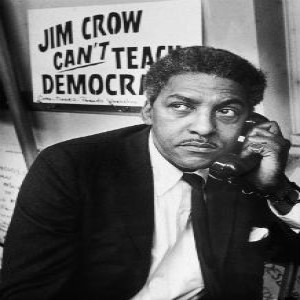
Friday Aug 28, 2020
August 28 - The Man You’ve Never Heard Of, But Probably Should Have
Friday Aug 28, 2020
Friday Aug 28, 2020
On this day in Labor History the year was 1963.
That was the day one of the most important stands for justice and equality took place in United States history.
Dr. Martin Luther King, Jr. delivered his “I Have a Dream Speech” to a quarter-million people in Washington D.C.
But did you know that one of the main organizers for the march was a man by the name of Bayard Rustin?
Rustin is often left out of the history books because he was gay and because of earlier communist affiliations.
He was born in 1912, and raised in West Chester, Pennsylvania.
He was raised in the Quaker tradition, and his commitment to peaceful, non-violent protest continued into the Civil Rights Movement.
Rustin joined the Young Communists League in the 1930s, a time when Communist organizers were some of the few people actively speaking out about racial injustice in the United States.
After he left the YCL, Rustin spent a brief time as the youth organizer for a March on Washington planned in the 1940s.
This movement was led by one, A. Philip Randolph.
The planned march was aimed at putting pressure on President Franklin D. Roosevelt to desegregate work at industries with federal wartime manufacturing contracts.
When President Roosevelt agreed to issue an order desegregating these jobs, the planned march was called off.
But the idea for the march lived on, and became a reality during the Civil Rights Movement.
Rustin went on to work in the labor movement.
He became the founder and first director of the AFL-CIO’s A. Philip Randolph Institute, which focuses on tearing down the walls of discrimination in work places and within the labor movement
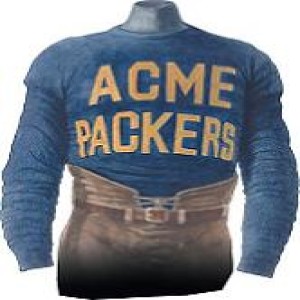
Thursday Aug 27, 2020
August 27 - The Packers
Thursday Aug 27, 2020
Thursday Aug 27, 2020
On this day in Labor History the year was 1921.
That was the day that Green Bay Packers football team received a charter from American Professional Football Association.
A year later this would become the National Football League.
The Green Bay club had started up two years earlier.
Its original sponsor was the Indian Packing Company, in Green Bay, Wisconsin.
They packaged canned meat.
Meat packing was a major industry in the Midwest during this era.
Packing plants in Chicago, Kansas City, Iowa and Wisconsin processed the cattle and pigs raised in the west as meat to feed the nation.
Curly Lambeau was a shipping clerk for the company.
He helped to organize a group of local players into a football team.
Curly persuaded his boss to donate money for the uniforms.
The name “Packers” was born.
Then when Indian Packing fell on hard times, they were bought out by Acme, another packing company based in Chicago.
So for a brief moment, the Green Bay Packers, one of the staunchest rivals of the Chicago Bears, was actually owned by a Chicago company.
Although Acme only owned the team for a year, the team nickname stuck.
Lambeau was able to buy back the team.
He went on to become the Packers coach, leading the team to six championships.
The Packers are not the only American sports franchise that’s name harkens back to a particular kind of labor.
Another Wisconsin team, the Milwaukee Brewers baseball team, is a reference to that city’s proud beer brewing tradition.
In Big Ten Sports the Purdue Boilermakers and the Nebraska Cornhuskers take to the gridiron.
These names reflect the working traditions of the cities where the teams play ball.
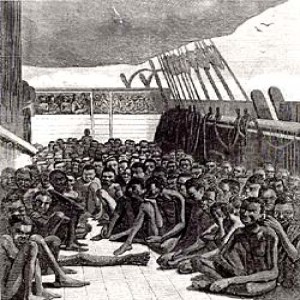
Wednesday Aug 26, 2020
August 26 - The Amistad
Wednesday Aug 26, 2020
Wednesday Aug 26, 2020
On this day in Labor History the year was 1839.
That was the day that the Amistad sailed into Long Island, New York.
The Amistad served as a Spanish slave ship.
Fifty-three captives, led by an enslaved rice farmer by the name Joseph Cinque, had revolted against their captors and taken control of the ship.
They came from what is now Sierra Leone, Africa.
They had endured the brutal Middle Passage on a Portuguese slave ship, the Tecora.
They had landed in Havana, Cuba where they were transferred to the Amistad.
From there they were supposed to sail to a Cuban sugar plantation.
The transaction was illegal.
Most of the major slave destinations in North and South America had outlawed bringing in newly enslaved people.
But since existing slave labor was still used in these areas, the illegal slave trade continued.
On July second the African captives escaped their chains and set upon their captors before they could load their guns.
They killed the ship’s captain.
The Africans demanded to be returned to Sierra Leone.
The US Navy intercepted the Amistad as it sailed up the US coastline.
The Africans were thrown into prison and charged with murder.
The case garnered national attention and made it all the way to the United States Supreme Court.
Former President John Quincy Adams presented the defense for the accused.
The court found in favor of the Africans.
Thirty-five were returned home.
The others had died while incarcerated or at sea.
The Amistad became the subject for a 1997 film by Steven Spielberg.
While the Amistad became famous, it was not the only one, similar uprisings were attempted on hundreds of slave ships during this era.
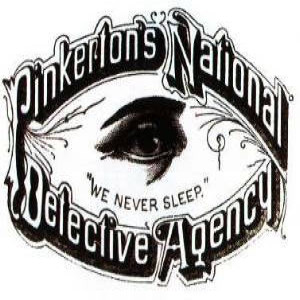
Tuesday Aug 25, 2020
August 25 - A Historical Irony
Tuesday Aug 25, 2020
Tuesday Aug 25, 2020
On this day in Labor History the year was 1819.
That was the day at Allan Pinkerton was born in Glasgow, Scotland.
His father was a policeman, who died while Allan was a boy.
This left the family in poverty.
As a young man he became involved in the Chartism movement.
This reform movement hoped to expand the political rights of the working class in Great Britain.
Allan had to flee his homeland to avoid arrest because of his involvement.
This led him to Chicago.
It is a great historic irony that Allan Pinkerton came to the United States because of his involvement in a working class cause.
Today Pinkertons are often considered some of the greatest armed foes against unionism in US labor history.
In Chicago, Pinkerton became involved in law enforcement and then formed his own detective agency.
The Pinkerton National Detective Agency made its name working against railway thefts.
But it became most notorious for opposing the labor movement.
Pinkerton spies infiltrated labor meetings for company owners, worked as hired guns to stop union organizing and protected strike breakers.
Pinkerton died in 1884, and passed the agency to his sons.
During the 1890s there were more Pinkertons and reserves than the standing army of the United States.
One of the most famous battles between Pinkertons and workers occurred at the 1892 strike against Carnegie steel in Homestead, Pennsylvania.
There Seven workers and two Pinkertons were killed.
The event inspired a song by William W. Delaney.
The lyrics include the lines, “God help them tonight in their hour of affliction, Praying for him whom they’ll ne’er see again, Hear the poor orphans tell their sad story, “Father was killed by a Pinkerton Man.
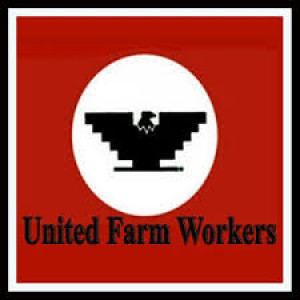
Monday Aug 24, 2020
August 24 - Fighting for Dignity
Monday Aug 24, 2020
Monday Aug 24, 2020
On this day in Labor History the year was 1970.
That was the day that the United Farmworkers went out on strike against California lettuce growers.
The UFW had led a successful boycott against grape growers that had drawn national attention to the harsh working conditions and low pay of those who harvested our nation’s food.
In an effort to keep the UFW from organizing lettuce workers, some of the growers had signed contracts with the Teamsters Union.
The UFW argued that these contracts did not represent the workers’ best interests.
As thousands of workers went on strike, Cesar Chavez called for a national boycott of non-union lettuce.
In the lead-up to the strike an estimated 4,000 workers attended a meeting in Salinas, California.
One worker, Antonio Sagredo explained the importance of the action.
The El Malcriado “Voice of the Farmworker, newsletter reported his words, “Let the people and the government of the United States know that we are ready to work—but that we must have what we ask. It isn’t very much. We don’t ask the impossible—only that they look upon us as human beings. We have the same ambitions that they do. We have families. We have rights. Why must they continue to treat us like beasts of burden and look for a thousand ways to bring us down.”
That December Cesar Chavez was jailed for leading the boycott.
Putting pressure on the growers through encouraging the public to boycott non-union harvested food was a key tactic for the farm worker’s movement.
It impacted the bottom line of the growers and moved them to sit down at the bargaining table.
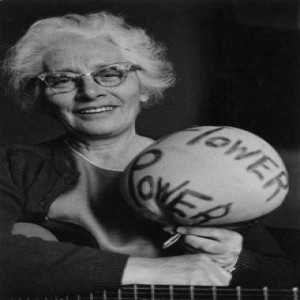
Sunday Aug 23, 2020
August 23 - Life’s Singer
Sunday Aug 23, 2020
Sunday Aug 23, 2020
On this day in Labor History the year was 1900.
That was the day that folk singer Malvina Reynolds was born to a Jewish family in San Francisco.
Her parents were socialists and operated a tailor shop.
Malvina learned the price of speaking out for what you believe in at a young age.
Her parents opposed US entry into World War I.
Because of this, Malvina’s High School would not issue her a diploma.
She was able to still go the college at Berkley, where she eventually earned her PhD.
She married carpenter and labor organizer William “Bud” Reynolds.
She became a prolific folk singer, playing around the Los Angeles area.
During the 1960s she wrote about songs supporting civil rights and labor rights.
Her song Free Enterprise offers the lyrics, “The air you breathe is poison, the food you eat is worse, the dollars in your pay check are pennies in your purse…There’s nothing free about it, you pay at every turn, Except the guys in Wall Street who have the stuff to burn, they had to make new brain machines to count their profits’ rise, but since there’s always room for more, they can still make their profits soar, a little war does wonders for free enterprise.”
Perhaps her most well-known song is “Little Boxes.”
The song was inspired by driving by hillside houses in Daly City, California.
It talks about the conformity of middle class suburbia.
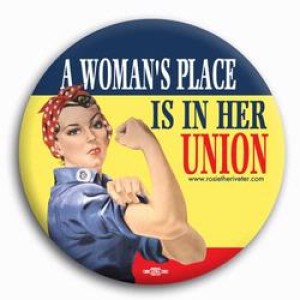
Saturday Aug 22, 2020
August 22 - Breaking the Glass Ceiling
Saturday Aug 22, 2020
Saturday Aug 22, 2020
On this day in Labor History the year was 1980.
That was the day that Joyce Miller became the first woman ever elected to the Executive Board of the AFL-CIO.
In her 2012 obituary the New York Timesdescribed Joyce’s commitment to women’s rights in the labor movement.
Writing “Ms. Miller saw union membership, collective bargaining and labor contracts as the road to equality for working women, and she believed that women should be a part of union management to make sure that attention was paid to issues like equal opportunity, equal pay, parental leave, child care, health insurance and discrimination in the workplace.”
Joyce grew up in Chicago, where she her earned her Master’s Degree in education from the University of Chicago.
She first entered the labor movement as worker at a gumball factory while attending college.
After graduation, she became the Education Director for the Amalgamated Clothing Workers in Pittsburgh.
She remained dedicated to union education for rank and file members.
Joyce was a founding member of the Coalition of Labor Union Women or CLUW.
She served as CLUW’s East Coast Vice President eventually being elected CLUW President in 1977, a position she held for 15 years.
Under her leadership CLUW worked as a powerful voice for women’s reproductive rights, improving child care, and increasing the number of women in union leadership positions.
In 1993, President Bill Clinton named Joyce Miller the Executive Director of the Glass Ceiling Commission.
The purpose of the commission was to gather testimony about women’s experiences in the workplace and to draft a report about their findings.
Of her career Joyce said, “I came to the labor movement with stars in my eyes, I saw it as a vehicle for social change, and I’ve never changed my mind.”

